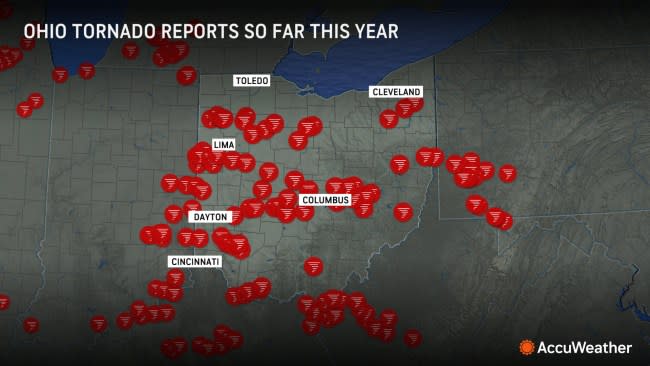Why tornadoes have swarmed Ohio and Pittsburgh this year
For the last month Texas has led the country for preliminary tornado reports this year; this is typical due to its size. However, on May 13, Ohio took command of the second-place ranking and remains there, with 66 reports, nearly twice any surrounding state, and more than their number nine ranking of 53 tornadoes for the entire year of 2023.
 |
This year, and especially this month, an area from eastern Ohio through northern West Virginia and into Pittsburgh has seen an unusually high number of tornadoes. This region falls within the purview of the National Weather Service's Pittsburgh office. Preliminary tornado reports total 27, a new monthly record since 2005 and nearly twice the previous record of 16 set in August 2021, data from the Iowa Environmental Mesonet says.
According to reports from the NWS Pittsburgh office, 14 tornadoes were confirmed by NWS investigators in their area of responsibility on May 8, May 9, May 11, and May 17. The strongest and most destructive tornado, an EF2, hit Finleyville, Pennsylvania, on May 11, damaging homes and knocking down trees over a 6-mile-long path with maximum estimated winds of 118 mph.
Incredibly, five of those tornadoes were within 20 miles of Pittsburgh. Only 16 other tornadoes have struck the area throughout recorded history, meaning that nearly a quarter of all tornadoes there have occurred in the last two weeks.
Why has it been such an active season? As the saying goes in real estate, location, location, location.
"This spring, the storm track has been from the southern Rockies to the Great Lakes," said AccuWeather Senior Meteorologist Tyler Roys.
 |
Two things fuel severe weather: Heat and moisture.
The storm track caused a wetter year with more storms. In fact, Pittsburgh has set a record for total precipitation year-to-date, with 22.67 inches, versus a historical average of 16.45 inches.
Severe storms were also fueled by warmth pushed into the Ohio Valley by the storm track and by unusually warm Great Lakes water temperatures this year. Roys said a faster-paced pattern starting near the end of the month will likely reduce the severe weather risk in the Ohio Valley.




